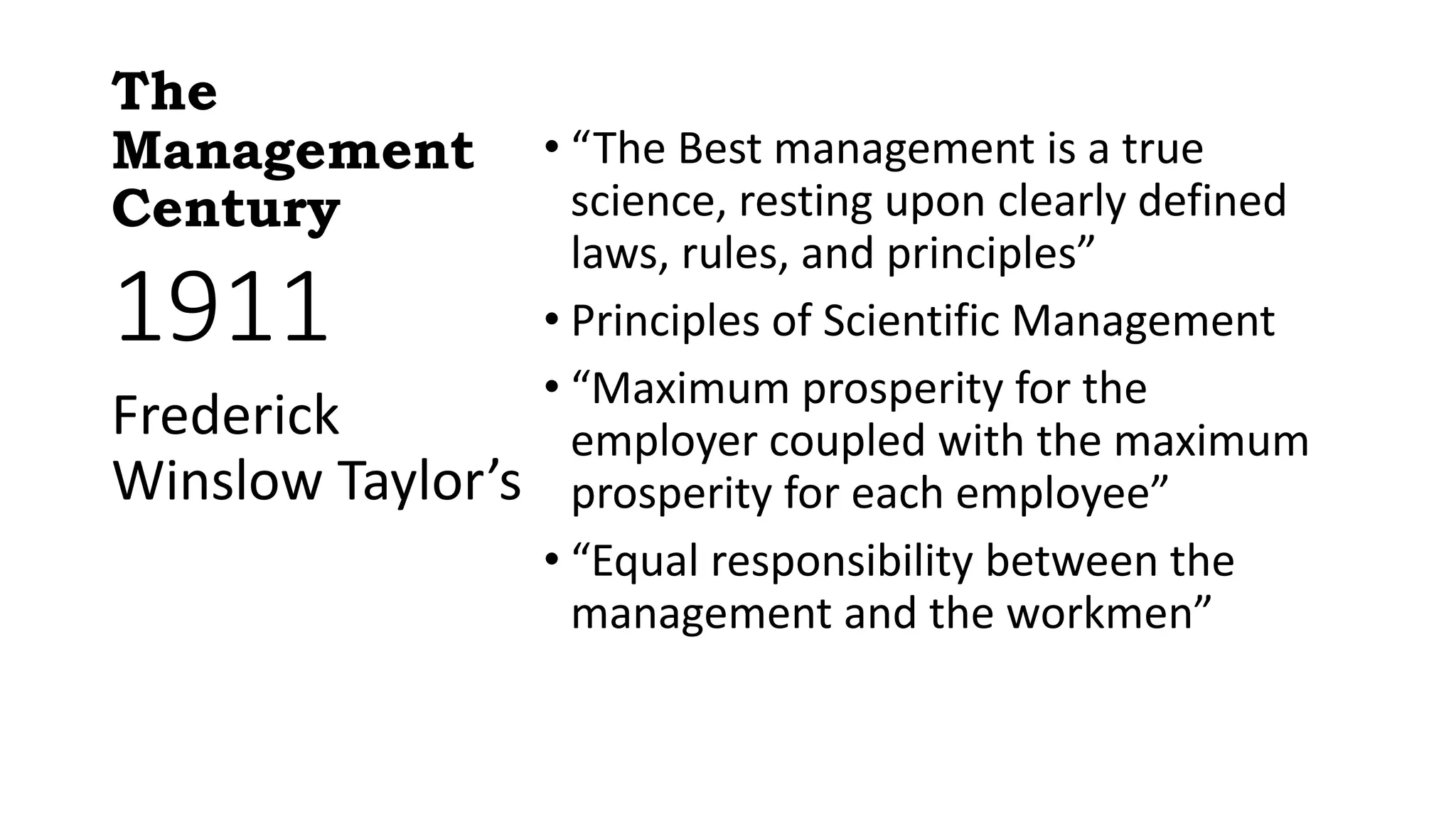This document summarizes the evolution of management theory and practice from 1880 to the present. It outlines three eras: 1) 1880-1940 focused on establishing management as a science; 2) 1940-1980 was a period of managerial confidence and public support; 3) 1980-present has seen a retreat to specialization and market forces. Key contributors and their theories are mentioned, including Taylor's scientific management, Ford's assembly line techniques, Fayol's administrative principles, Follett's participatory management, and Porter's competitive forces model.




















